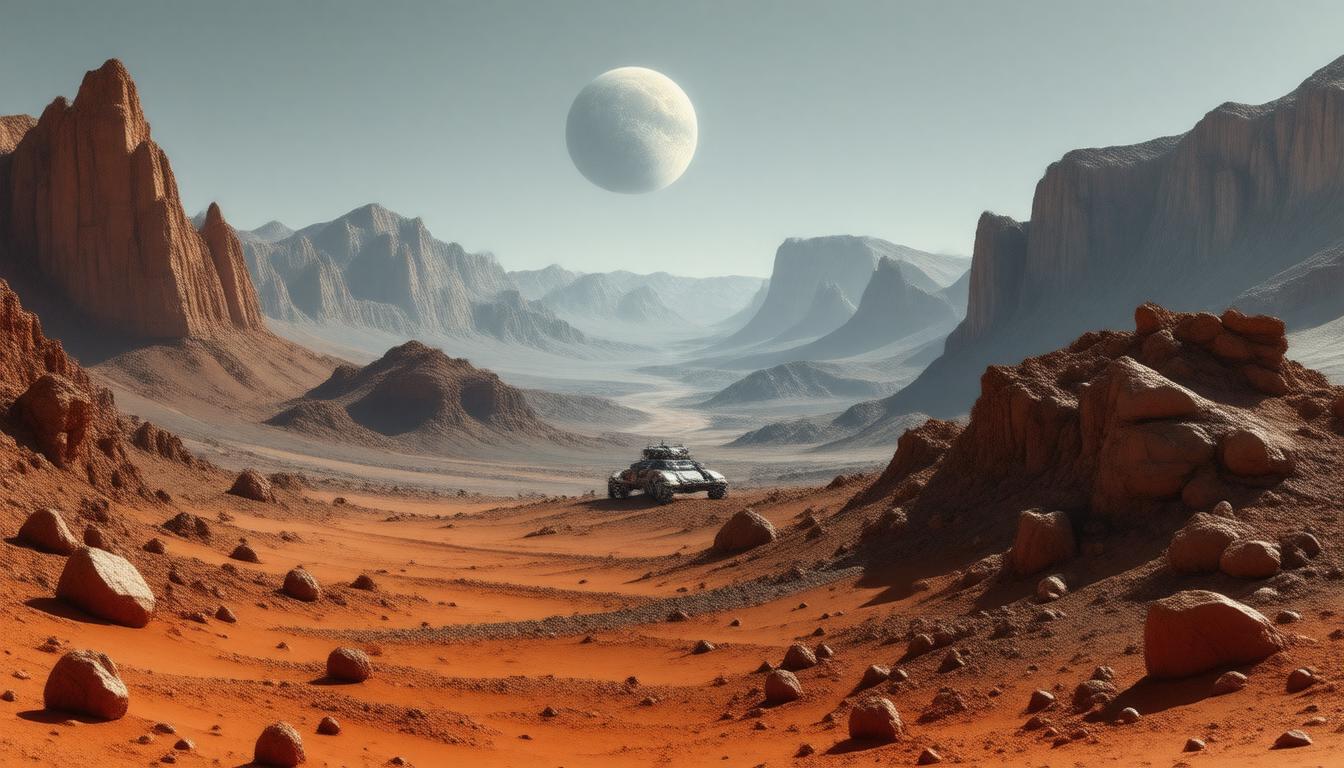Mars, often referred to as the Red Planet, has long captured the imagination of scientists and enthusiasts alike. Its striking reddish hue, reminiscent of rust, has sparked countless theories about its geology, climate, and potential for life. As we embark on an era of unprecedented exploration, the secrets and wonders of Mars await discovery, raising questions about its past and hopes for its future. In this article, we will delve into the fascinating geography of Mars, explore the historical significance of its exploration, overview current missions and technologies, and gaze into the future of Mars exploration.
Topics
- Mars features diverse geological structures such as valleys, mountains, and polar ice caps.
- Historical explorations of Mars have shaped our understanding of planetary science and inspired future missions.
- Current missions like Perseverance and Curiosity are using advanced technologies to uncover Mars’s secrets.
- Mars exploration aims to determine past habitability and search for signs of ancient life.
- Future prospects include human missions that could establish a sustainable presence on Mars.
The Fascinating Geography of Mars
Mars, often referred to as the Red Planet, captivates both scientists and space enthusiasts alike with its diverse geography and intriguing geological features. Located fourth from the Sun, Mars is characterized by its rust-colored soil, which is rich in iron oxide, giving it a unique appearance that distinguishes it from other planets in our solar system. From the towering Olympus Mons, the tallest volcano in the solar system, to the sprawling Valles Marineris, one of the largest canyons, the landscape of Mars tells a story of volcanic activity, tectonic shifts, and possible ancient water flows. The planet also hosts polar ice caps that change with the seasons, providing further insight into its climatic conditions. Studying the fascinating geography of Mars not only helps us understand its past but may also pave the way for future exploration and even human colonization.
Historical Significance of Mars Exploration
The historical significance of Mars exploration cannot be overstated, as it marks a pivotal chapter in humanity’s quest for knowledge beyond our planet. Mars, the fourth planet from the sun, has been a focal point of scientific intrigue since ancient civilizations first gazed upon its reddish hue in the night sky. The first successful flyby of Mars by NASA’s Mariner 4 in 1965 opened the floodgates for more detailed investigations, revealing a world that was both familiar and alien. Subsequent missions, including the Viking landers, Mars rovers, and more contemporary ventures like Perseverance and Curiosity, have not only transformed our understanding of the planet’s geology and climate but have also raised critical questions about the potential for past or present life on Mars. As we look to the future, continued exploration of Mars is set to play a key role in astrobiology and the overall understanding of our solar system, reinforcing its importance not just for scientists, but for all of humanity contemplating our place in the universe.
‘The important thing is not to stop questioning. Curiosity has its own reason for existing.’ – Albert Einstein
Current Missions and Technologies Unveiling Mars
As the quest to understand Mars intensifies, several current missions and cutting-edge technologies are unveiling the mysteries of the Red Planet. NASA’s Perseverance rover, which landed on Mars in February 2021, is playing a pivotal role in this exploration. Equipped with advanced scientific instruments, it is tasked with searching for signs of ancient life and collecting samples to be returned to Earth in a future mission. Meanwhile, the European Space Agency’s ExoMars mission aims to deploy the Rosalind Franklin rover, equipped with a drill capable of reaching beneath the Martian surface to investigate potential habitats for past life. Additionally, private companies like SpaceX are developing technologies aimed at the eventual colonization of Mars, illustrating the growing interest and investment in Mars exploration. Drone-like helicopters, such as NASA’s Ingenuity, are also proving vital by providing aerial reconnaissance that complements ground-based data collection. Together, these innovative missions and technologies are not only enhancing our understanding of Mars but are also paving the way for future human exploration.
Future Prospects: What Lies Ahead for Mars Exploration
The future prospects of Mars exploration are brimming with exciting possibilities that could redefine our understanding of the Red Planet and our place in the cosmos. As technology advances, missions geared toward Mars are becoming increasingly sophisticated, promising to uncover groundbreaking evidence of past life and valuable resources. With NASA’s Perseverance rover currently conducting extensive surface analysis, and plans for human expeditions on the horizon, the focus on Mars has never been more intense. Meanwhile, international collaborations, such as the European Space Agency’s ExoMars program, aim to further investigate Mars’ geology and climate. Additionally, private sector involvement, spearheaded by companies like SpaceX, is set to revolutionize our approach to interplanetary travel, making Mars more accessible than ever. As we continue to push the boundaries of exploration, the next decade promises remarkable advancements in our quest to understand Mars and its potential for sustaining human life in the future.
Improve your professional profile AND do your part to contribute and advance human civilization by becoming a member today.



